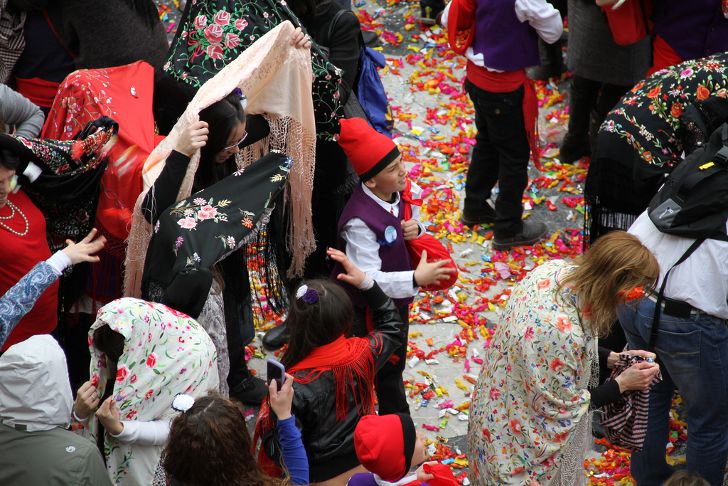The first recorded mention of the Carnival of Vilanova i la Geltrú dates back to 1790. The modern Carnival combines old rituals and customs with modern satire, which makes it a really unique celebration.
The Vilanova Carnival begins on Fat Thursday (Dijous gras) with the arrival of King Carnival. It is an elaborate ritual which includes a vibrant street procession with floats and dancers followed by a satiric sermon delivered by His Majesty the King Carnival, also known as the “king of the senseless”. On the first day of the Carnival, local children are excused from school to participate in the Merengada, a day long event of fighting with meringue (and eating it in the process).
The highlight of the Carnival is Les Comparses. This spectacular event is held on Carnival Sunday. It features about 12,000 dancers divided into rival groups. They try to outdo one another in dancing while simultaneously throwing hard candy at their rivals. Many participants try protect their faces but bruises caused by being hit by a piece of candy are still very common.
The Carnival of Vilanova i la Geltrú also includes pranks in honor of the King Carnival, a nighttime meringue battle for adults, correfocs (fire runs, spectacular fire shows involving performers dressed up as devils), bed races on the streets, masquerade balls, children’s parties, nights of revelry, dances, and more. During the Carnival many people wear satiric costumes alluding to politics and current events.
The final event of the Carnival is the King’s funeral. The funeral procession includes people dressed in elaborate costume, many of whom are cross-dressers. In the funeral house, the body of the King, which is an effigy of course, is surrounded by weeping concubines and an honor guard. The body is carried to the city’s main square and burned in a massive pyre after a satiric eulogy. The funeral is followed by a spectacular fireworks display.

Photo: Ajuntament de Vilanova i la Geltrú



